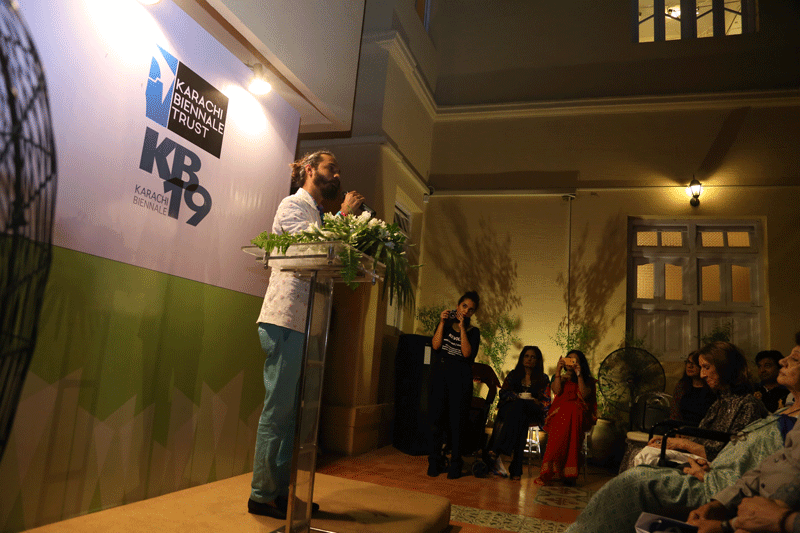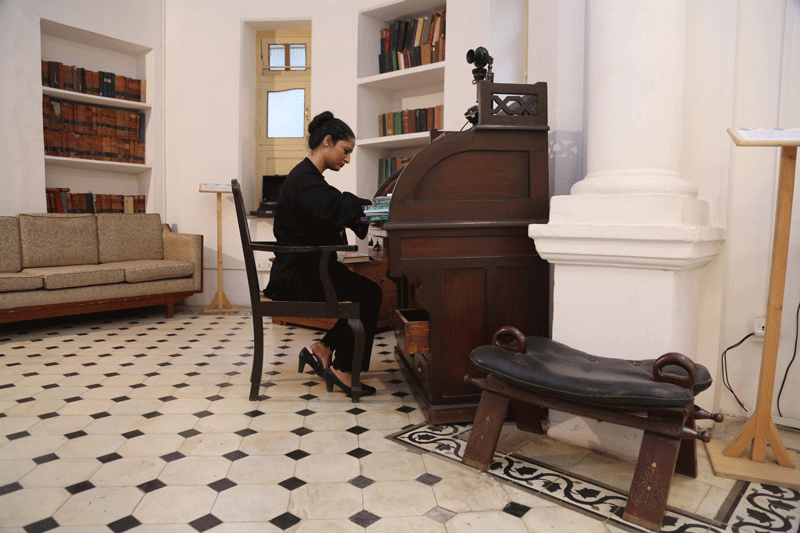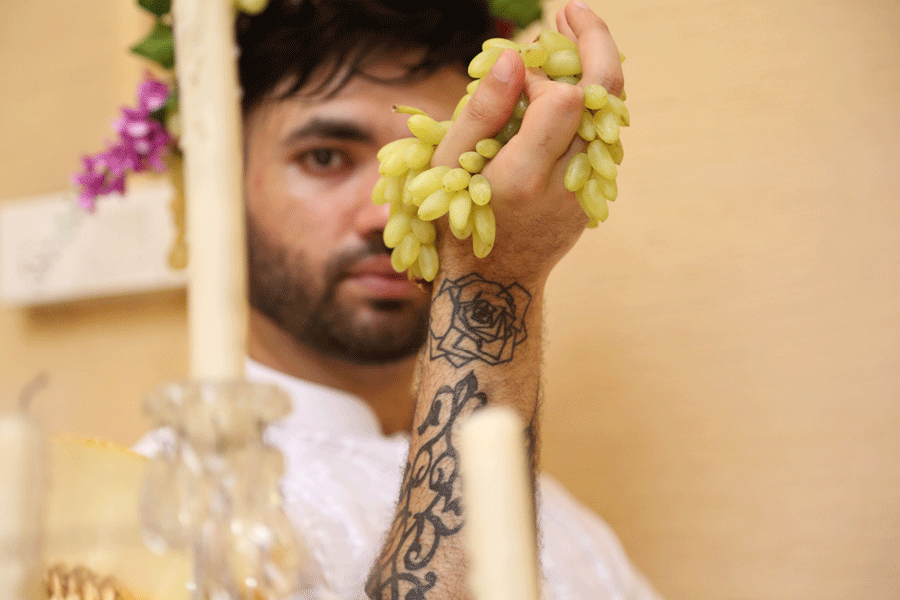Karachi Biennale Event
By Nusrat Khawaja | Art Line | Published 7 years ago

Muhammad Zeeshan, curator KB19
The Karachi Biennale Trust (KBT) held a reception to introduce Muhammad Zeeshan as curator for the second edition of the Karachi Biennale (KB), which will take place in 2019. By hosting the reception in the beautifully restored TDF Ghar in Jamshed Quarters, the KBT upheld its vision to showcase historic Karachi through contemporary art events.
The rooftop of TDF Ghar offers a remarkable view of Jinnah’s Mausoleum. Not far along M A Jinnah Road is Wazir Mansion, where Jinnah was born in 1876. This city of his birth and death has grown monstrously and visitors have to traverse a relentless stream of traffic to access TDF house. However, once inside, calmness takes over from the mind-numbing noise of cars and the corrosive smell of petroleum fumes. A sense of history is palpable in the architecture of the building and from the maturity of the tamarind and sea-almond trees that filter out noise and dust. An ongoing poster exhibition, featuring the work of architect Moses Somake who was a contemporary of Jinnah, reinforces the spirit of a Karachi that was inclusionary and respectful of aesthetics.
This inclusionary spirit features significantly in the foundational message of the Karachi Biennale (KB). Its CEO, Niilofur Farrukh, summarised it in her introduction to KB17 by saying: “Public Art practice has begun to reclaim public space, lost to intolerance and violence. Performative work evocatively articulates narratives of conflict and betrayal in visceral gestures by artists.”
Muhammad Zeeshan is well-regarded in Pakistan and abroad as an artist and curator. His practice has broadened hugely from the tradition of miniature painting he trained in as a student at the National College of Arts in Lahore, to large-scale laser cut paintings. In his work, he mixes and matches imagery from miniature painting to highlight contemporary issues in a conceptual parallax of ideas and visuals.

Waheeda Bano performing acts of erasure.
“I’m looking for art that speaks not just from the mind but also from the heart,” said Muhammad Zeeshan with conviction at TDF Ghar, as he underscored the role of art in highlighting the dysfunctional elements that afflict society. This gave a strong clue regarding what his curatorial theme for KB19 may be when it is announced later this year. Muhammad Zeeshan’s predecessor, Amin Gulgee, had chosen the theme ‘Witness’ to curate the KB17 artworks.
Contemporary art practice demands edginess in the observer in order to interpret the art and to make it yield more than what obviously meets the eye. Four art presentations were ongoing at TDF Ghar. They demonstrated how artistic practice serves to challenge tired patterns of thought.
Maryam Saleem, whose work deals with “multiple layers when subjected to interpretation,” had installed a bubble machine that released a constant stream of soap bubbles. On the surface, this seemed child-like and festive. But Zeeshan invoked a dramatic shift in the viewers’ perception when he suggested that the water used to make the bubbles was contaminated and such polluted water – endemic to the city’s slums – was what poor children washed in.
The three other participating artists performed their own art.
Batool Zehra created a ‘carpet’ by pouring differently shaded ash in her piece titled ‘Farsh.’ Her ‘rug’ was located in the main entrance and people were invited to walk over it, smudging the pattern in the process even as she kept restoring the design. The dispersal of ash was integral to this highly temporal performance. The dispersal illuminates the phenomenon of flux which Batool Zehra explains: “Everything is in process. The things that have form as well as the things without forms like our thoughts, desires, experiences, etc.”
The power of ‘formless’ things such as thoughts, and their ability to provoke reaction and repression was the theme of Waheeda Bano’s performance titled ‘Repertoire-II.’ She sat at a desk crossing out segments of text with a censor’s black marker. Written text is a repository of ideas. When it is obscured by the censor’s pen, the potential for discourse to arise from written ideas is narrowed. Ideas – like ash – are smudged and dispersed.

Muhammad Ali offers nourishment in Life’s Feast.
Muhammad ‘Mirchi’ Ali created a tableau vivante called ‘A Nourisher in Life’s Feast’ by which he intended to explore “the role of the artist as culture-builder and nourisher, and the connection between the mundane and the extraordinary.” He steadily chopped melons while seated at a table laden with real fruit and a goat’s skull in a parody of the vanitas genre of European still life painting. The wreath worn by him, created with plastic fruit, rendered him into a kitschy Dionysian figure.
KB19’s event at TDF Ghar was a stimulating nexus for history, architecture, discourse, memory and contemporary art to negotiate physical and conceptual space within urban – and one might add – intellectual congestion. A reference to Foucault’s heterotopic spaces as other spaces which allow for different possibilities would not be inappropriately applied to the event, at which all present became participants in conscious-building theatre to reflect upon “what is past, or passing or to come.”


